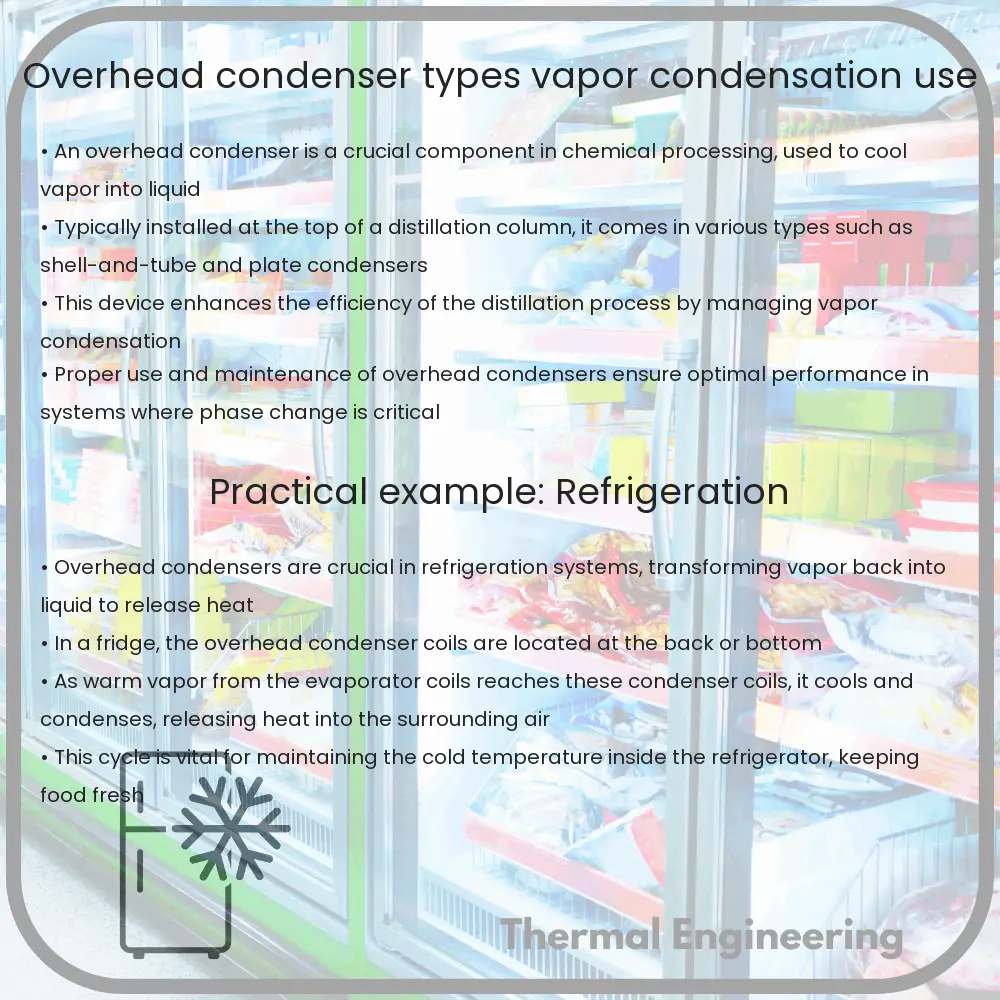Learn about overhead condensers, vital for distillation in chemical industries, encompassing types, mechanisms, and applications.

Understanding Overhead Condensers
An overhead condenser is a crucial component widely used in chemical and petrochemical industries, especially in distillation columns. This type of condenser is typically mounted at the top of a distillation column where it serves to cool and condense vapor back into liquid. The functionality and efficiency of overhead condensers play a vital role in the distillation process, impacting both the purity of the product and the energy consumption of the unit.
Types of Overhead Condensers
Overhead condensers can be broadly categorized into two main types based on their design and function:
- Shell and Tube Condensers: This is the most common type of condenser used in industrial applications. It consists of a series of tubes encased in a larger shell. The vapor flows through the shell side and cools when it comes into contact with the cold tubes, which are typically cooled by water or another coolant.
- Plate Condensers: Plate condensers use a series of metal plates instead of tubes. The vapor passes through the spaces between these closely spaced plates, and cooling water flowing through alternate plates removes heat from the vapor. This design is more compact and can achieve higher heat transfer efficiency compared to shell and tube condensers.
Vapor Condensation Mechanisms
In overhead condensers, vapor condensation occurs primarily through two mechanisms:
- Total Condensation: Here, all the vapor entering the condenser is converted into liquid. This method is typically employed in systems where the whole distillate needs to be collected as a liquid.
- Partial Condensation: This method involves condensing only a part of the vapor, while the rest remains in gaseous form. Partial condensation is used in applications where non-condensable gases need to be separated from the vapor mix.
Use of Overhead Condensers
Overhead condensers are predominantly used in distillation processes to condense the vapor back into liquid form at the top of the distillation column. The condensed liquid, often referred to as the distillate, can be either collected as a product or returned to the column as reflux. This reflux helps to control the concentration of the components in the final product. Overhead condensers are thus crucial for achieving the desired efficiency and effectiveness of the distillation process. Their design and operational parameters are typically tailored to the specific requirements of the process, including the type of mixture being separated and the desired purity of the final products.
Conclusion
Overhead condensers are a fundamental component in many engineering systems, particularly in chemical processing. Through efficient condensation of vapors, they assure the continual operation of distillation columns while enhancing energy efficiency and product purity. With advancements in technology, modern condensers are becoming more efficient and reliable, paving the way for more sustainable industrial operations. Understanding the types of condensers, mechanisms of vapor condensation, and their applications in various fields is essential for any engineering professional involved in the design or operation of chemical separation processes.